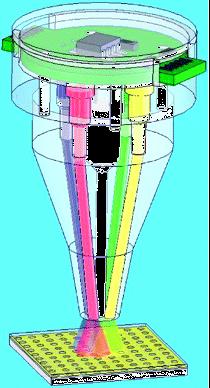Singapore scientists report the full development of a new palm-sized sensor capable of detecting disease-causing microorganisms and toxins as well as other biohazards instantly without the need for an external power supply or computer connection

Singapore scientists report the full development of a new palm-sized sensor capable of detecting disease-causing microorganisms and toxins as well as other biohazards instantly without the need for an external power supply or computer connection.
This coveted device, perfect for remote clinics, combat zones and other troubled sites, represents the next generation of faster and simpler sensors, the study notes.
In the new study, researchers Pavel Neuzil and Julien Reboud explain that the new device uses an existing method to detect DNA, proteins or cells, based on their reaction with radiation that damages the nano-surface where they are found. Most existing sensors of this type require an external energy source, a complex and expensive device for processing the data and rely on an external connection to a personal computer to receive the data.
Their internal data processing facility is based on simple components, such as four light-emitting diodes that operate in a unique pattern to produce the results without the need for a computer, the researchers note.

One response
Scientists report the invention of a new source of respectable income.